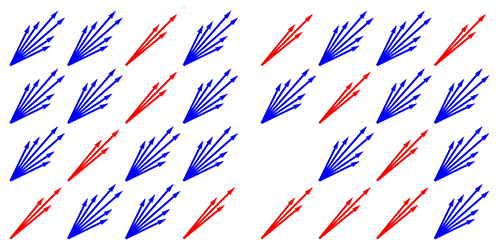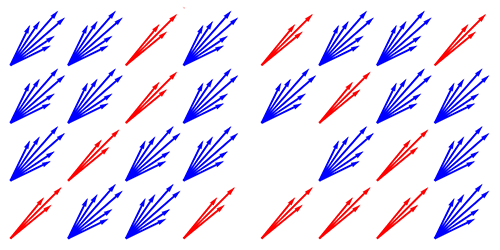How to Untangle Quark and Gluon Jets
High-energy particle collisions spew forth a mash of different particles, often in the form of collimated streams, or “jets.” Jets are comprised of hadrons (such as protons, neutrons, mesons), but they originate from accelerated quarks and gluons. Eric Metodiev and Jesse Thaler of the Massachusetts Institute of Technology, Cambridge, have now adapted a text-mining technique in order to determine the properties of such quark- and gluon-initiated jets directly from data. Compared with indirect approaches that involve simulations to understand data, their method may lead to more accurate determinations of jet properties, which provide important clues about the behavior of quarks and gluons at high energies.
The researchers rely on a technique called topic modeling, which was originally developed to identify themes in written documents. Say you wanted to analyze how often the subject of dogs appears in a document but not pets in general. Topic modeling would allow you to identify words unique to this topic (e.g., bark, canine) and to then use these identifiers to pinpoint how often and where the topic shows up.
Metodiev and Thaler demonstrated that the same methodology can be applied to jets. The duo compared data from quark-enriched and gluon-enriched samples of jets and showed that it’s possible to eliminate overlapping properties of the two jet types and identify those distinct to each one. These distinct properties include the number of particles in the jet and the jet’s mass, and they can be used to determine the distribution and fraction of each jet type within a sample. The approach could also be applied to high-energy jets initiated by particles other than quarks and gluons.
This research is published in Physical Review Letters.
–Michelle Hampson
Michelle Hampson is a freelance science writer based in Toronto.





